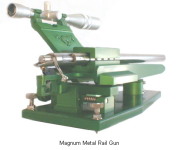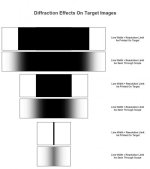Yes. But there is no way to disentangle this extraneous variable from the test.
In my experience with several railguns, with scopes that range from Unertl, Lyman, B&L, new and old Leupold and March, there is no way to pinpoint this error…I’m now referring to a single railgun with a single scope. Even on “mirage-free” days, there are still atmospheric conditions that cause image shifting problems that can be greater than a ring at 100 yards.
With all due respect to the contributors to this thread that see otherwise, we will have to agree to disagree.
I contend that there is no meaningful way to reliably diagnose a scope for POA mechanical error of .020 to .030” of an inch at 100 yards solely using a “scope-checker” device.
A highly skilled BR shooter might be able to identify .020-.030” of error by shooting the rifle under controlled conditions (preferably in a tunnel), and would probably wear out a barrel in the process. I’ve been in this game since 1995, and I can assure you that I couldn’t do this (I’m not a top shooter

).
As Jackie has stated in many threads over a period of years, we should simply try what is best by using the best equipment available to us over time (meaningful range time), and learning the subtleties through its practical use and observation.
There is simply no way to do a corollary test in the field to establish a standard with a riflescope and isolating its minute mechanical gradations of error.
I
do believe one can practically use this test to identify POA errors when there are gross accuracy problems. That is...aggregates that are greater than what can be expected for a well tuned BR rifle.
Greg Walley
Kelbly's Inc.



